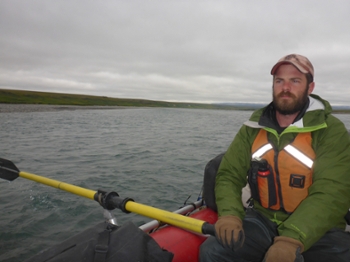Biologist looks at genetic past of viruses to try to predict future outbreaks

His background is as a field biologist and mammologist. He has worked with the Museum of Southwestern Biology Division of Mammals for six years. His current research focuses on the evolution of hantaviruses, especially virus strains found in non-rodent mammals. He uses phylogenetics, the study of evolutionary relationships among biological entities, such as species or genes, and phylogenomics, phylogenetics at the gnomic scale, to investigate evolutionary history.
Hantavirus, which is spread by rodents such as deer mice, is rare. New Mexico has had the most cases in the United States with 109 over the last 25 years, representing about 15 percent of all U.S. patients. It was first discovered in Korean War soldiers, Liphardt said.
“I use genetics to reconstruct
Liphardt’s research has taken him to Alaska, Panama, Mongolia, and Japan to gather samples from wild mammals and screen them for hantavirus. He uses the computing resources at CARC because he has large amounts of data.
“There is data called ‘base pairs’ in DNA that can number in the billions. Trying to see the differences in them is a really difficult task. The data is so big, I can’t visually inspect it. I need the fast computers, which is what we have here,” Liphardt explained.
Since joining the CARC staff, Liphardt’s duties have expanded. He started out working to update and expand the user support information on the CARC website and has now moved on to helping users through the help system and doing software testing.
Originally from California, Liphardt moved to Albuquerque in 1992 when his mother came to pursue her graduate degree in English at UNM. He wants to stay in academia and build and develop natural history museums, as well as pursuing software development for bioinformatics, the science of collecting and analyzing complex biological data such as genetic codes.
“I’ve really enjoyed my time at CARC so far and value the experience and everything I have learned. What I’ve learned at CARC has been incredibly beneficial to my own research,” he concluded.
UNM News: Research looks at virus past to predict future outbreaks
